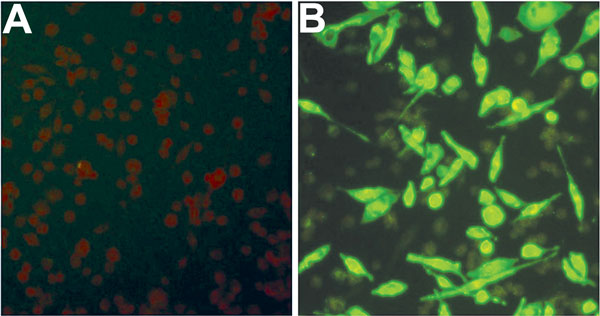Volume 21, Number 10—October 2015
Research
Haemaphysalis longicornis Ticks as Reservoir and Vector of Severe Fever with Thrombocytopenia Syndrome Virus in China
Figure 3

Figure 3. Immunofluorescence assay detection of severe fever with thrombocytopenia syndrome virus (SFTSV) antibodies in serum samples from mice fed by SFTSV-infected ticks. A) Normal mouse serum (negative control) reacting with SFTSV-infected DH82 cells; B) infected mouse serum (1:128, mouse no. 4) reacting with SFTSV-infected DH82 cells.
Page created: September 22, 2015
Page updated: September 22, 2015
Page reviewed: September 22, 2015
The conclusions, findings, and opinions expressed by authors contributing to this journal do not necessarily reflect the official position of the U.S. Department of Health and Human Services, the Public Health Service, the Centers for Disease Control and Prevention, or the authors' affiliated institutions. Use of trade names is for identification only and does not imply endorsement by any of the groups named above.